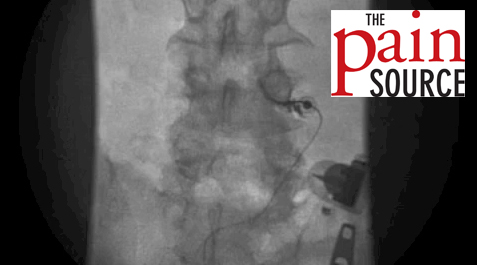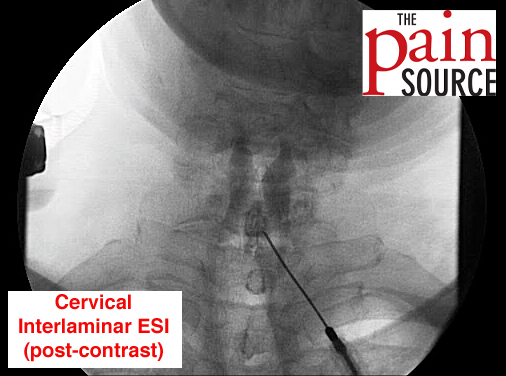By Chris Faubel, MD —
PM&R. 2010 Mar;2(3):174-81.
The diagnostic validity of hip provocation maneuvers to detect intra-articular hip pathology.
Maslowski E, Sullivan W, Forster Harwood J, Gonzalez P, Kaufman M, Vidal A, Akuthota V.
Department of Physical Medicine and Rehabilitation, University of Colorado Denver, Mail Stop F-493, 12631 East 17th Avenue, Academic Office 1, Room 2513, Aurora, CO 80045, USA. elmaslow@hotmail.com
http://www.pmrjournal.org/article/S1934-1482%2810%2900051-1/abstract
ABSTRACT
OBJECTIVE: To determine which hip provocation maneuvers best predict the presence of an intra-articular hip pathology.
DESIGN: Prospective diagnostic study.
SETTING: Musculoskeletal clinic at a university-based multispecialty group practice.
PARTICIPANTS: Fifty subjects referred for intra-articular hip injection under fluoroscopic guidance.
INTERVENTIONS: Subjects were examined with 4 pain provocation maneuvers before and after anesthetic intra-articular hip injection administered under fluoroscopic guidance.
MAIN OUTCOME MEASUREMENTS: Presence of intra-articular hip pain generator was confirmed by > or =80% improvement on visual analog scale after intra-articular hip injection.
RESULTS: The most sensitive tests were flexion abduction external rotation (FABER) test and internal rotation over pressure (IROP) maneuver. For the FABER test, sensitivity was 0.82 (95% CI 0.57-0.96); sensitivity for the IROP maneuver was 0.91 (95% CI 0.68-0.99). The most specific test was the Stinchfield maneuver, with specificity at 0.32 (95% CI 0.14-0.55). FABER and IROP had the highest positive predictive value, with 0.46 (95% CI 0.28-0.65) and 0.47 (95% CI 0.29-0.64), respectively. IROP had the highest negative predictive value at 0.71 (95% CI 0.25-0.98).
CONCLUSIONS: IROP and FABER may be worthwhile components of the clinical evaluation of hip pain to determine intra-articular hip pathology. These tests are nonspecific and therefore not necessarily negative in the absence of intra-articular hip pathology. These hip provocation maneuvers are a useful part of an evaluation that includes history, further examination findings, and other diagnostic studies. Copyright 2010 American Academy of Physical Medicine and Rehabilitation. Published by Elsevier Inc. All rights reserved.
———————————————————————
DISCUSSION
This was a prospective study looking at the diagnostic validity of multiple provocative hip maneuvers in predicting true hip pathology (as opposed to pain coming from other sources).
Gold standard: An 80% improvement on the visual analog scale between pre- and post- intraarticular (hip) injections of anesthetic (2% lidocaine and 0.75% bupivacaine) was used as the gold standard to confirm “true hip pathology”.
- FABER (Patrick): supine; hip flexion, abduction, external rotation
- Internal rotation over pressure (IROP): supine; hip and knee flexed to 90o, internal rotation torque put through the femur, while putting down pressure over the opposite side ASIS
- Scour maneuver: supine; hip and knee flexed to 90o; internal and external rotation torque applied to femur while continually putting downward force through that tested femur
- Stinchfield maneuver: supine; straight leg raise to 30o (knee in full extension); pt resists downward force (towards the table) applied just proximal to the knee
- All of the above hip provocative maneuvers had high sensitivity, but relatively low specificity
- The IROP and FABER were the most sensitive (88% and 81% respectively)
- Combining the FABER and Stinchfield had the most sensitivity (96%)
- All had specificity less than 38% (poor)
- The positive predictive value (PPV) for each one was around 50%
- The negative predictive value (NPV) was also around 50% for each one
- Although with combining the FABER and Stinchfield, the NPV was 75%
Study Errors:
- You can read the actual online paper to get the multiple errors in the study.
- Aside from arthroscopic examination of the hip joint, I feel using an 80% improvement on VAS before and after injection was a good “gold standard”. Although, they openly admitted the volume of anesthetic/steroid used (10ml) was too much to be confident the volume stayed inside the hip (and didn’t leak out, anesthetizing surrounding extra-articular pain generators).

















can you put up pictures of the 4 maneuvers?